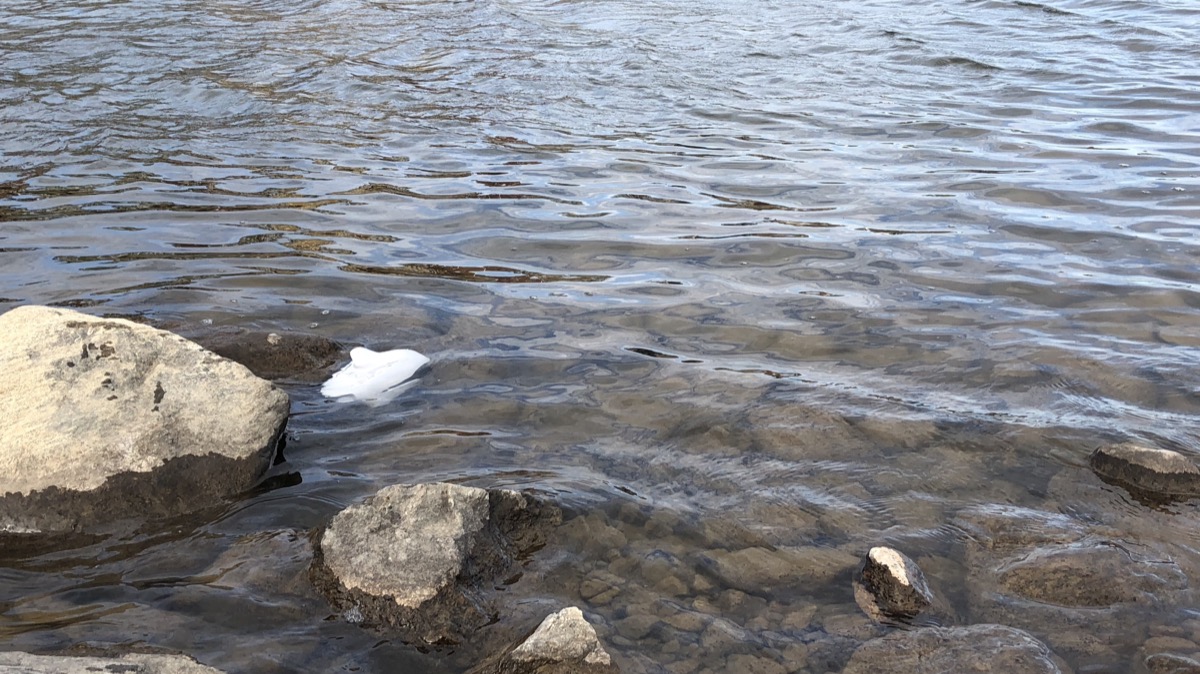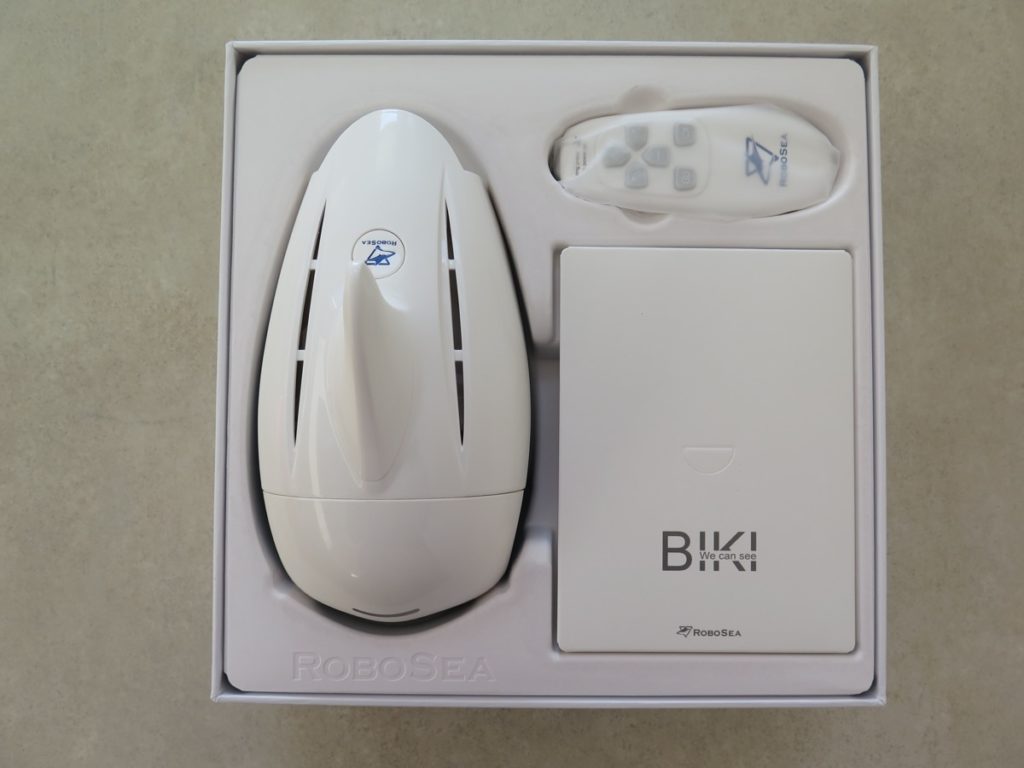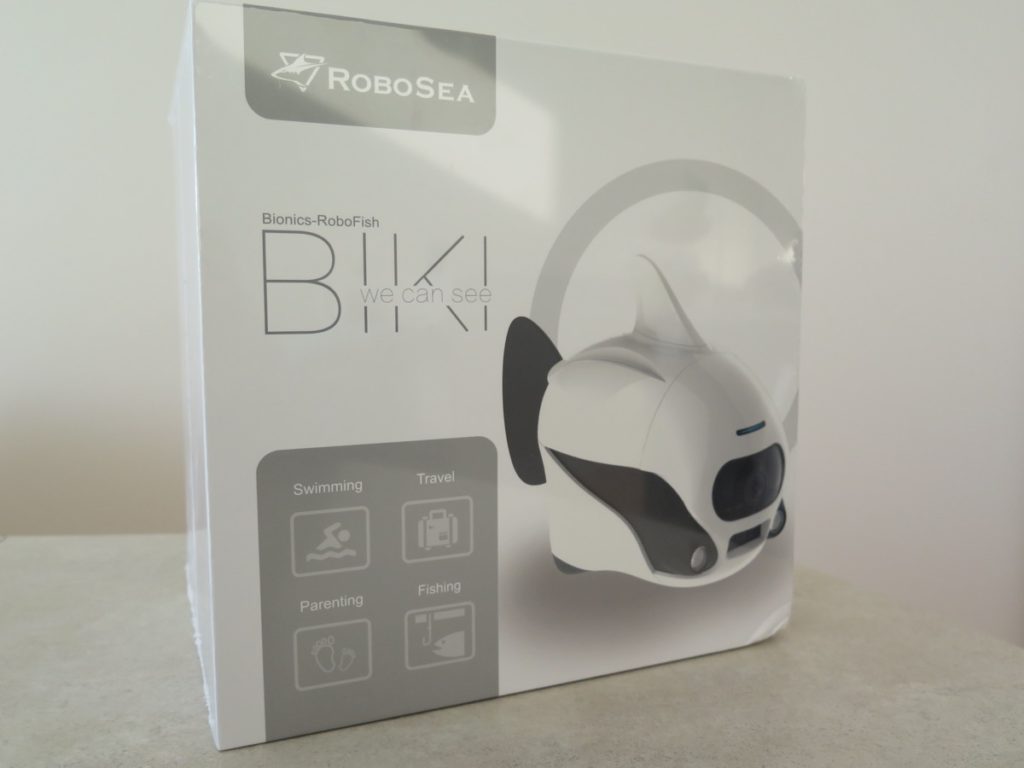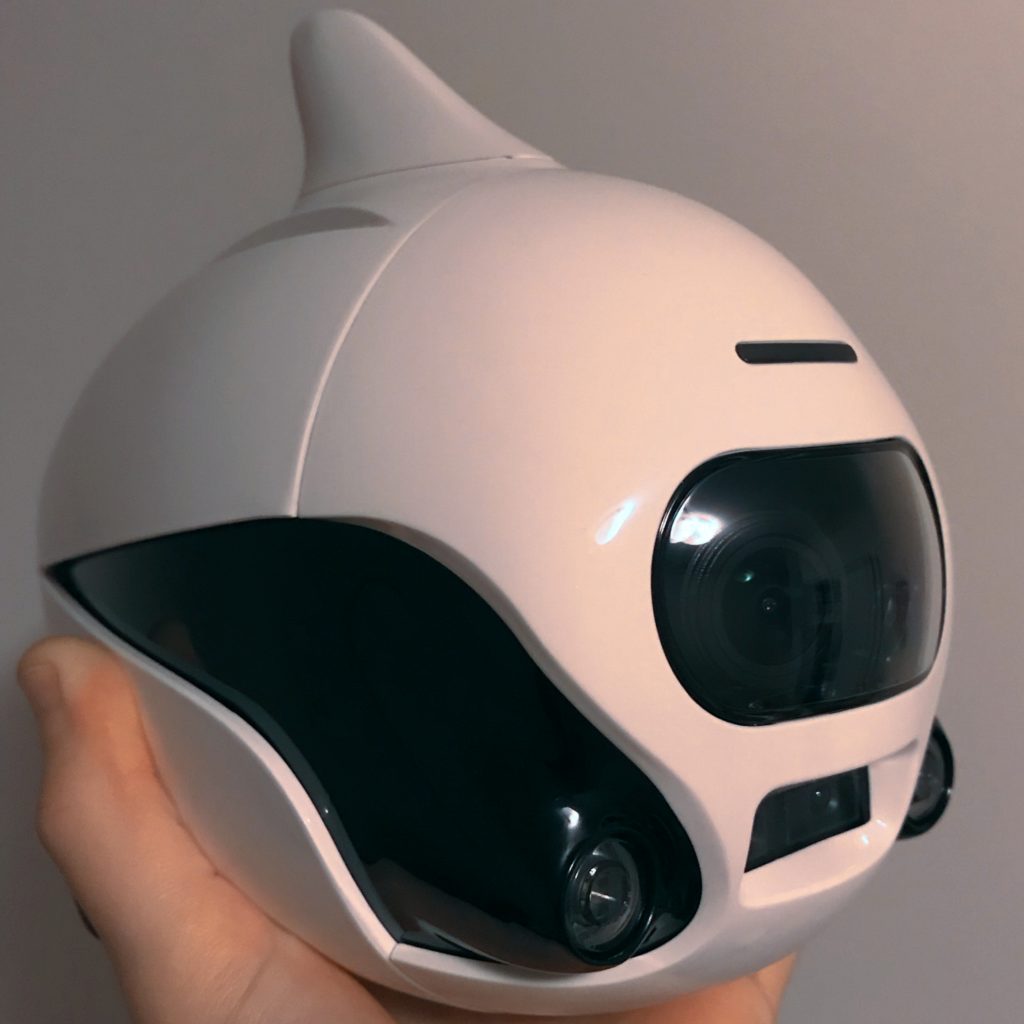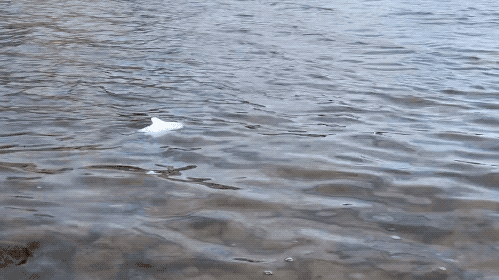Table of Contents
Drones are all the rage these days, allowing you to explore and record the skies. While it can be fun to set flight with one, why doesn’t the sea get the same love? After all, a huge chunk of our waters has yet to be explored. While you might not make a new scientific discovery with it, the BIKI by RoboSea is an underwater drone that lets you explore the water. How well does it work, and should you buy it over a standard drone? Let’s find out!
What’s In The Box
Inside of the box you’ll find the actual device itself, a remote, a charging cord, and a wall adapter. The box features some potential uses, such as Swimming, Travel, and Fishing, however, I would believe “Parenting” is a bit of a stretch. The device looks like that of a fish, and it has a cute and charming personality.
Design
A tail attaches to the back of the device that allows it to move when it is in the water. It is easy to attach and remove it, which makes it great for being portable. Underneath that is a micro USB port. USB-C would have been nice to see, but it’s not a big deal. A button on the top allows you to turn on BIKI. The BIKI creates two Wi-Fi networks for you to connect to. One allows you to control the device itself as well as view a live stream of the camera, while the other allows you to simply stream what the camera sees through an app called YUTUPRO.
Operation
Once connected, you’ll see a live feed through the eye of the camera. The specs on it are pretty impressive. It features a stabilized 4K camera with 150° of vision. The live stream will not be in 4K, but I was quite impressed with the quality that the live stream came in. In the bottom left corner you can control the direction that that BIKI moves in, and in the bottom right you can adjust the speed that BIKi travels at. It can reach a maximum of 1.12 miles per hour. The dorsal fin at the top acts as an antenna and sticks out of the water, allowing you to control BIKI. If you want to have BIKI go beneath the surface of the water, you can either create a route in the app and then run it, or you can use the remote. The remote works up to 50 meters, and it also is waterproof, which makes it ideal for diving. On the front of the device are two lights, which can be turned on if desired to explore the dark depths below.
The first few times I tested BIKI, the water wasn’t very clear, so I didn’t really capture anything worth keeping. On one day it was very windy, but I was quite impressed with how well BIKI fought against the waves.
The next time I used BIKI, the water was exceptionally clear. The footage that was appearing on my iPhone was the best that I had seen, and I was recording and taking pictures. Unfortunately, I would never be able to view that footage.
The One That Got Away
Later that same day I brought BIKI to the open water in hopes of capturing footage of some fish. Not too shortly after, the current caught the underwater drone and started pulling it towards the bay. At first, the current wasn’t too strong, so I tired maneuvering it through the app. It was a bit tricky to control, but it seemed to be moving towards me. However, the current started to pull it away more, so I started to go towards it. That’s when I received an alert on my phone that the battery on the BIKI was low. I had charged it the night before and had only used it for about 15 minutes, so I’m really confused as to why the battery would be low. Perhaps it was the frigid waters, or perhaps it was due to the spotty connection as the BIKI was traveling farther and farther away. The battery is estimated to give 90 to 120 minutes, and the battery was displayed to be full before I put it in the water.
It gave the option to return to the starting point, so I selected it, however, it gave an error saying that it did not have a strong GPS signal, an error that I had received before in my testing. At this point, BIKI was traveling much faster. The current started in to make it bob up and down. When the fin would go under the water, I would temporarily lose the connection, so at this point, I started using the remote, which works while the BIKI is under the water, and it also has a longer range. Sadly, despite me getting into the freezing water and using the remote, I was unable to retrieve the BIKI. It went further and further away until I lost track of it and stood there staring into the endless water in front of me. I was hoping perhaps with the tide shifting that it might have gotten stuck in the nearby rocks somewhere, but a hunt the next day uncovered nothing.
It was a real shame, as I was just starting to get great footage with it and there was a lot of fun possibilities that I wanted to use it with. However, you can use my experience to help you in case you buy one. For starters, it’s important that you don’t use it in the open water. While perhaps you could get great footage with it, it can be all too easy for it to get caught in a current and be swept away. And once it’s gone, it’s really gone. With a drone, you could at least put a Tile or other tracking device on it with hopes to find it again. You can’t really do that with BIKI. You’d also want to make sure that you can still see the BIKI while controlling it to make sure that it’s moving towards you and not away from you when at a distance.
So sadly, because of that incident, I am unable to share any footage or photos I captured while using BIKI. However, assuming that I did retrieve BIKI, the next step to get the images onto my phone would be to download them from the device through Wi-Fi. BIKI has 32GB of onboard storage, which lets you save up to 2.2 hours if you record in 1080p. If you use 4K, it’s roughly 4 times larger than a 1080p file, so it can take some time to download it from the device. As mentioned before, if the conditions are right, you can get some pretty amazing footage while using BIKI. While I don’t have any to share with you, here’s some sample footage from RoboSea’s original Kickstarter page.
https://youtu.be/1TuVj6Oh3vk
One thing I found rather odd is that, at least in the iOS version of the app, there was no clear way to export the video to another app, such as Photos or YouTube. I know it’s possible because I accidentally imported one into my Photos library, but at least at the time of this writing, there is not a clear export button. However, this can easily be fixed with a software update. Some other features, such as the GPS and smart object detection, also did not work as desired, so a future software update could be in the works to help improve the reliability of these features.
Final Thoughts
So, should you buy BIKI instead of a standard conventional drone? Well, it depends. One important factor is if you have enough money. At the time of this article being published, BIKI retails for $799 USD on Amazon. That’s pretty pricey when you compare it with other drones, where you can buy a fair drone for cheaper. Then again, none of those can travel in the water, and you can easily get drones much more expensive than BIKI, especially if it packs specs like a 4K camera. The BIKI is also nice because the battery lasts much longer compared to any airborne drone. If you’re someone who’s often in and around the water, you’ll love BIKI, and get some great footage with it. However, if the seas don’t interest you that much, or if you can’t afford it, you’re probably best to go with a standard drone.
While you could chance it and try to score a free BIKI by waiting for mine to wash up onto the shore, you’re probably best to just buy one from Amazon for $799. What do you think of BIKI? Is the unique item worth the price tag? Let us know in the comments down below!






